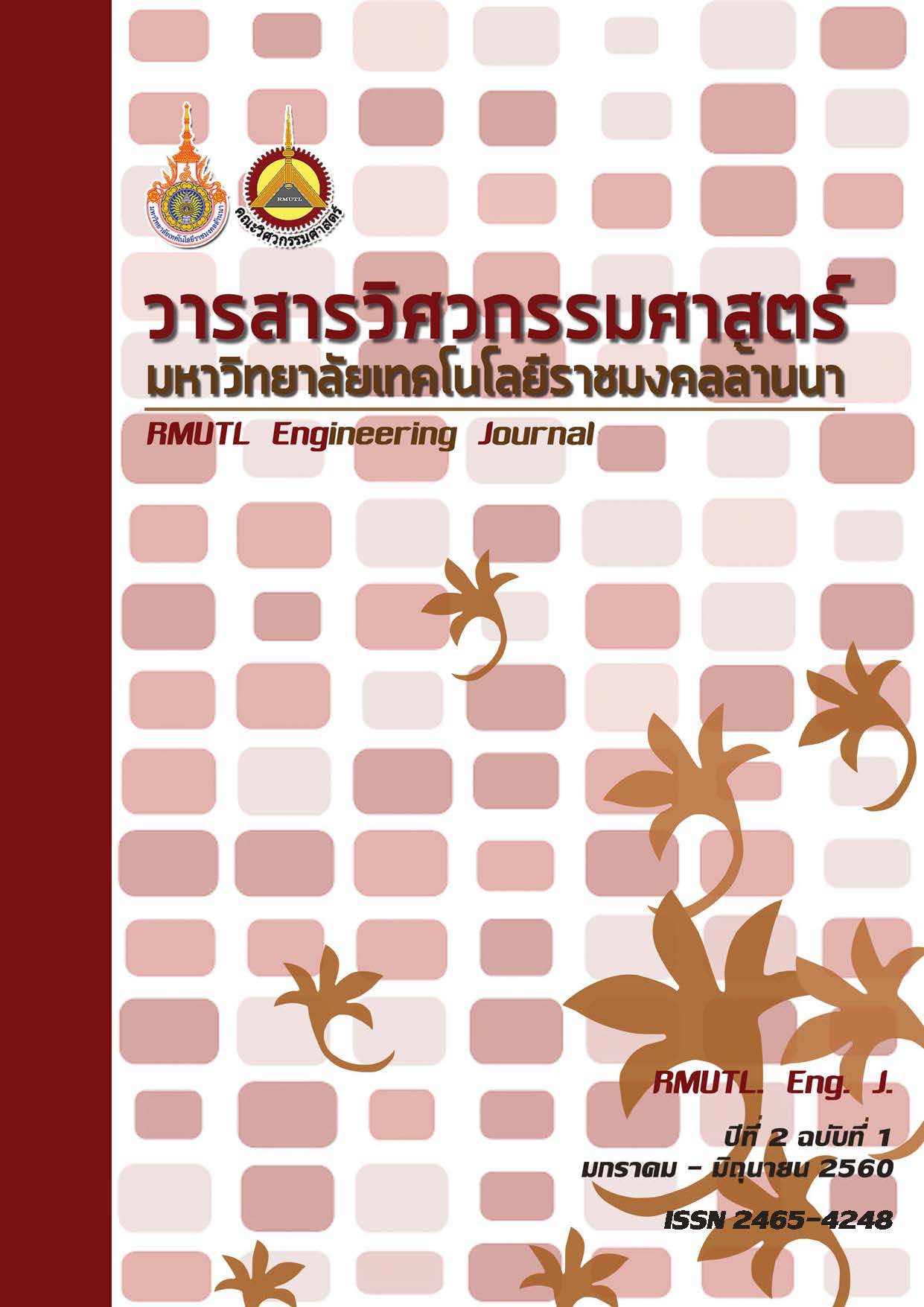Study of Factors Affecting Wireless Power Transmission Using a Double-Transmitter-Coil
DOI:
https://doi.org/10.14456/rmutlengj.2017.5Keywords:
wireless power transmission, power output, double-transmitter coil, mutual inductance, resonance frequencyAbstract
To increase the power output of multiple wireless power transmission and thus investigate factors affecting the wireless power transmission. The objective of this study was to study and analyze factors affecting wireless power transmission using a double-transmitter-coil. Analyzing an equivalent circuit showed that the affecting parameters are input voltage, load resistance, mutual inductance and resonance frequency. A wireless power transmission circuit driven by a full bride inverter was designed. The designed experiment was focused on mutual inductance and resonance frequency which were more potentially changeable than other parameters. The results from this study showed that 1) The number of transmitter- coils, the directions of electric current and a proper position of transmitter-coil affected mutual inductance 2) A double-transmitter-coil at an optimal distance position increased the power output and the efficiency of wireless power transmission 3) Adjusting of frequency resonance following the change of distance, position of transmitters increased the power output and the efficiency of wireless power transmission. The findings of this study could be utilized as a guideline for further study and development relating to wireless power transmission
References
2. Beh, T.C., Imura, T., Kato M., and Y. Hori. (2010). Basic Study of Improving Efficiency of Wireless Power Transfer via Magnetic Resonance Coupling Based on Impedance Matching. Industrial Electronics (ISIE), IEEE International Symposium, 2011-2016.
3. Zhong, W., Lee C.K., and Hui, S.Y.R.(2013). General Analysis on the Use of Tesla’s Resonators in Domino Forms for Wireless Power Transfer. IEEE Trans. Ind. Electron, vol.60(1).
4. Yoon, J.I. and Ling, H.(2011). Investigation of near-field wireless power transfer under multiple transmitters. IEEE Antennas Wireless Propagation Lett, pp. 662–665.
5. Lee, K. and Cho, D.(2013). Diversity analysis of multiple transmitters in wireless power transfer system. IEEE Trans. Magn, vol. 49(6), pp. 2946–2952.
6. Hatanaka, K., Sato, F., Matsuki, H., Kikuchi, S., Murakami, J., Kawase, M. and Satoh, T.(2002). Power transmission of a desk with a cord-free power supply. IEEE Trans. Magn, vol. 38(5), pp.3329-331.
7. Robert L. Boy lestad. (2003). Introductory circuit analysis 10th ed. New Jersey, USA: Peason Education, Inc., ch.21, pp.935-968.
8. Joy, R., Dalal, A., and Kumar, P.(2014). Accurate Computation of Mutual Inductance of Two Air Core Squar Coils with Lateral and Angular Misalignments in a Flat Planar Surface. IEEE Trans. Magn, vol. 50(1).
9. Raju, S., Wu, R., Chan, M., and Yue, C.P. (2014) Modeling of mutual coupling between planar inductors in wireless power applications. IEEE Trans. Power Electron, vol. 29(1), pp. 481–490.
10. Zhang, Y., Zhao, Z., and Chen, K. (2014). Frequency-Splitting Analysis of Four-Coil Resonant Wireless Power Transfer. IEEE Trans. Ind. Appl, vol. 50(4), pp. 2436-2445.










